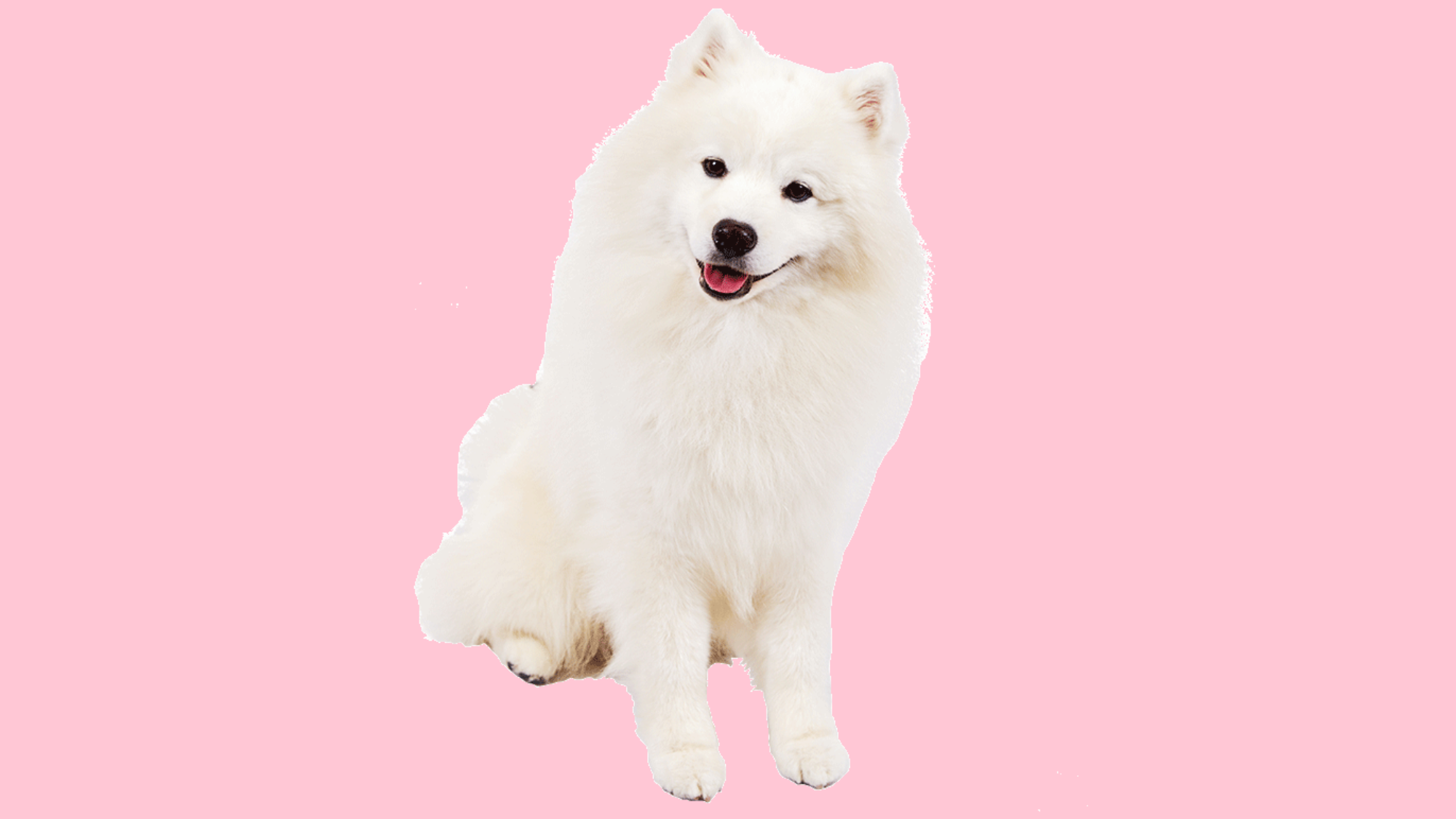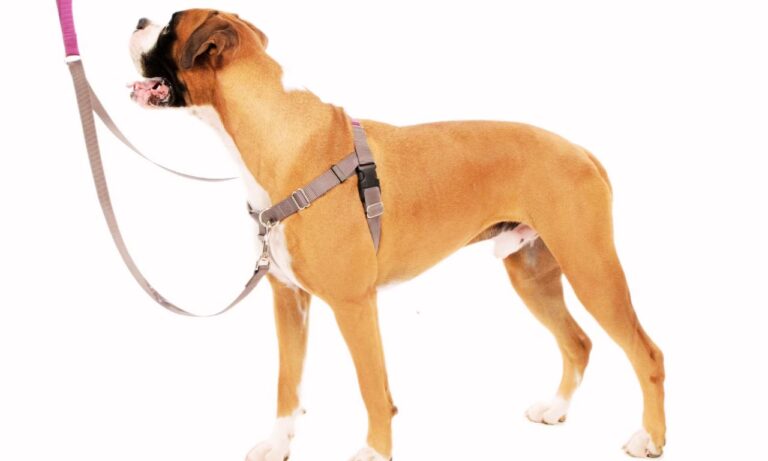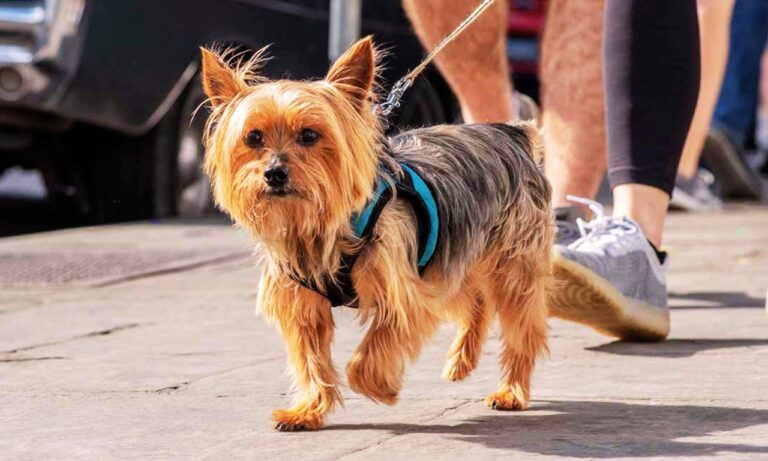Fluffy, friendly, and famously photogenic, Samoyeds are one of the most beautiful and beloved dog breeds around the world. Known for their thick white coats and signature “Sammy smile,” these dogs are as sturdy as they are sweet. But if you’re planning to bring a Samoyed home—or are already watching your puppy grow—you might be wondering: How much should a Samoyed weigh? and Is my Samoyed on track with their growth?
In this complete guide, we’ll dive deep into the Samoyed weight chart by age, key factors that affect their size, and how you can make sure your fluffy companion grows into a healthy adult.
Discover the ideal option by exploring what is the best collar material for a Bichon Frise to ensure your pet’s comfort and durability.
Blog Highlights
ToggleWhat Is the Average Weight of a Samoyed?
Samoyeds are classified as medium to large-sized dogs, built to withstand the harsh Siberian winters where they originally pulled sleds and herded reindeer. They aren’t just fluffy; under that coat is a surprisingly strong and muscular body.
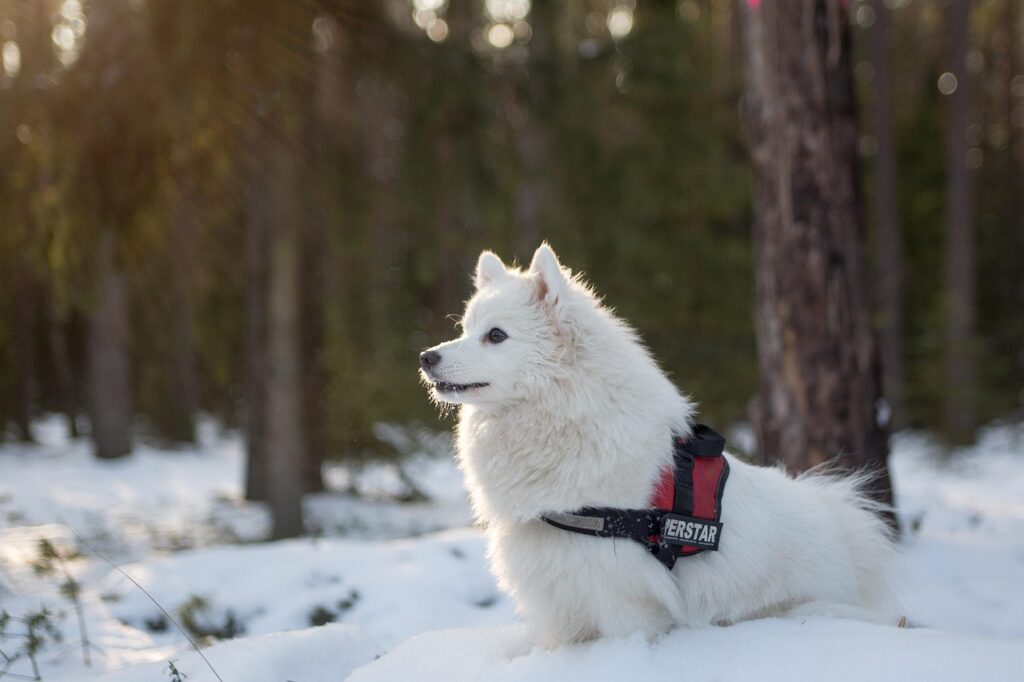
On average:
- Adult male Samoyeds weigh between 45–65 pounds (20–29.5 kg).
- Adult female Samoyeds weigh slightly less, around 35–50 pounds (16–23 kg).
Of course, genetics and individual variation mean some Samoyeds fall slightly outside these ranges, but this gives you a reliable baseline.
Their bodies are compact and powerful, allowing them to be both agile and hardworking, all while maintaining that irresistibly soft appearance. To find the perfect fit, learn more about what size collar for a Bichon, ensuring your dog’s comfort and safety.
Samoyed Weight Chart by Age
Samoyed puppies grow fast, particularly in their first year. Below is a general samoyed weight chart to help you track your Samoyed’s weight from their early weeks into adulthood.
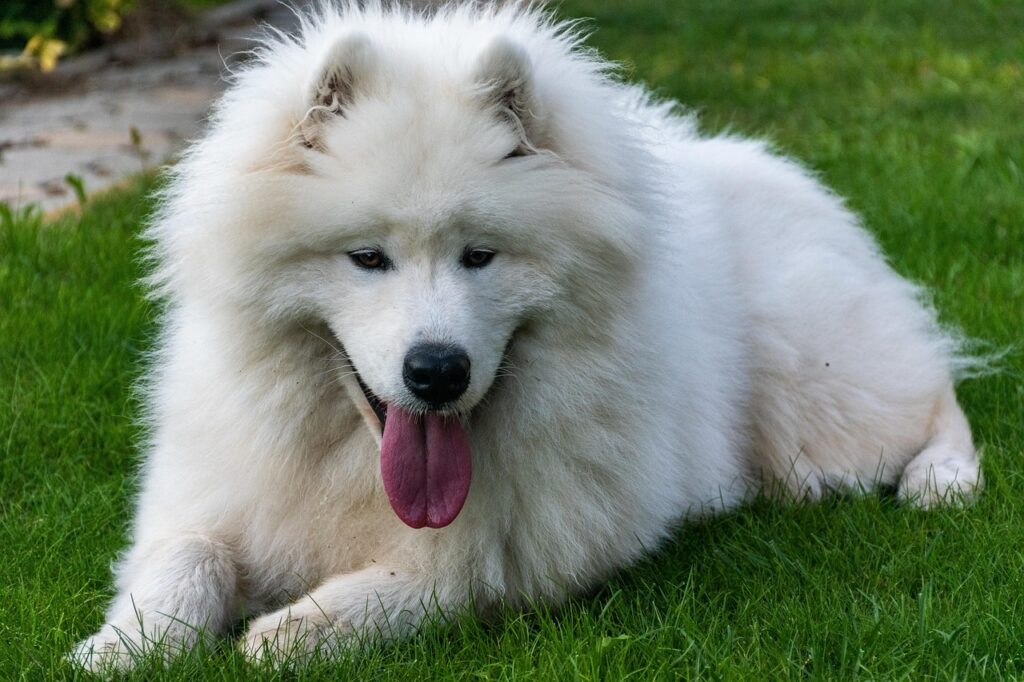
| Age | Average Weight (Male) | Average Weight (Female) |
| 8 weeks | 10–15 lbs (4.5–6.8 kg) | 8–13 lbs (3.6–5.9 kg) |
| 3 months | 20–25 lbs (9–11.3 kg) | 17–22 lbs (7.7–10 kg) |
| 4 months | 25–32 lbs (11.3–14.5 kg) | 20–27 lbs (9–12.2 kg) |
| 5 months | 30–38 lbs (13.6–17.2 kg) | 25–33 lbs (11.3–15 kg) |
| 6 months | 35–45 lbs (15.8–20.4 kg) | 30–40 lbs (13.6–18.1 kg) |
| 8 months | 40–52 lbs (18.1–23.6 kg) | 35–45 lbs (15.8–20.4 kg) |
| 10 months | 43–58 lbs (19.5–26.3 kg) | 38–48 lbs (17.2–21.7 kg) |
| 12 months | 45–60 lbs (20–27.2 kg) | 40–50 lbs (18.1–22.6 kg) |
| 18 months | 45–65 lbs (20–29.5 kg) | 40–50 lbs (18.1–22.6 kg) |
Most Samoyeds will reach their final height by about 12 months, but they continue to “fill out”—gaining muscle mass and thickness—until about 18–24 months.
How Fast Do Samoyeds Grow?
Samoyeds experience rapid growth during their first six months, followed by a slower, steadier rate.
Typically:
- 0–6 months: Fast and noticeable growth
- 6–12 months: Continued steady weight gain and height increase
- 12–24 months: Muscle-building phase, where they mature fully

It’s crucial not to rush their growth with excessive calories or supplements. Steady, natural development prevents future issues like joint problems. The ideal size collar for English Springer Spaniel typically ranges from 14 to 20 inches, depending on the dog’s age and neck size, ensuring a comfortable and secure fit.
Male vs Female Samoyed Weight Differences
Gender plays a noticeable role in size when it comes to Samoyeds.
- Males are generally larger, taller, and heavier with broader chests and bigger heads.
- Females tend to be more delicate and slightly more refined in build.
For example, an adult male Samoyed often tips the scales at 55–65 pounds, while an adult female usually weighs 40–50 pounds.
Because of these differences, it’s important to compare your puppy’s growth to the appropriate gender averages.
Factors That Influence Samoyed Weight
Not every Samoyed grows exactly according to the chart. Several factors influence their final size and shape.
1. Genetics
Samoyeds come from a range of working lines and show lines. Working-line Sammies might be stockier and heavier, while show-line dogs often have fluffier coats and a slightly more elegant build.
Knowing your puppy’s lineage can give clues to their eventual size.
2. Diet and Nutrition
Nutrition plays a major role during critical growth phases.
A Samoyed puppy needs:
- High-quality proteins for muscle development
- Controlled calcium and phosphorus levels for strong bones
- Adequate calories without overfeeding
Overnutrition can cause joints to grow too quickly, leading to skeletal issues.
3. Exercise Level
Samoyeds are active dogs that need plenty of daily physical activity.
- Puppies benefit from controlled play and short walks.
- Adults need rigorous exercise like hikes, agility courses, and pulling activities to stay fit and lean.
Dogs that get consistent exercise often have better muscle tone and slightly higher weights (in a healthy way).

4. Health Issues
Health problems such as parasites, infections, or digestive disorders during puppyhood can slow growth.
Similarly, obesity (yes, even Samoyeds can get chubby under all that fluff!) is a growing concern if diet and activity aren’t balanced. Find out what style dog collar is best for hounds to ensure comfort and safety for your furry friend.
How to Tell If Your Samoyed Is at a Healthy Weight
Samoyeds’ fluffy coats make it tricky to judge their body condition at a glance. You’ll need to feel rather than just look.
Here’s how:
- Ribs: You should be able to feel their ribs under a thin layer of fat without pressing hard.
- Waistline: Viewed from above, there should be a visible waist.
- Tummy tuck: From the side, the abdomen should tuck up behind the ribs.
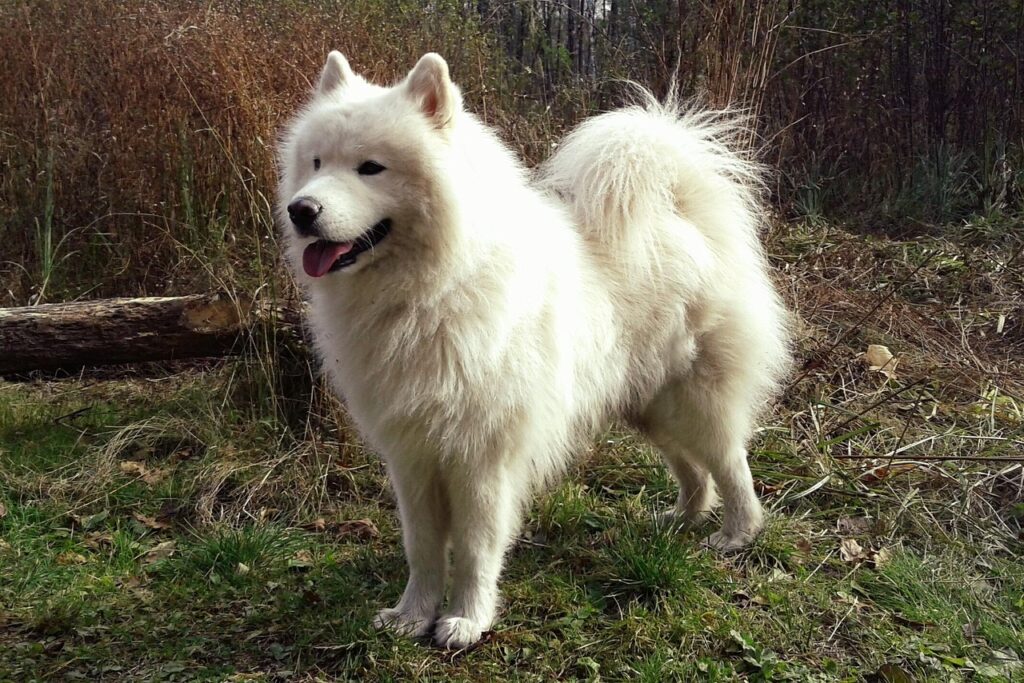
If you can’t feel the ribs or see a waist, your Samoyed might be overweight.
If the ribs are starkly visible with no fat cover, they may be underweight.
A vet can help you confirm a healthy body condition score (BCS).
Healthy Weight Management Tips for Samoyeds
Helping your Samoyed stay in a healthy weight range is key to avoiding many preventable health problems later in life.
1. Feed Age-Appropriate Food
- Puppy formulas until about 12–15 months
- Adult formulas thereafter
- Senior-specific diets around 7–8 years old
Stick to portion guidelines and avoid free-feeding.
2. Maintain Consistent Exercise
Samoyeds thrive on daily physical and mental stimulation.
Long walks, obedience training, dog sports, and even sled pulling (urban mushing!) are excellent activities.
Without enough exercise, Samoyeds can gain excess weight and develop behavioral problems from boredom.
3. Regular Weigh-Ins
Monitor your Samoyed’s weight monthly, especially in the first two years.
Investing in a pet scale or checking during regular vet visits helps you catch issues early.
4. Be Mindful of Treats
Limit treats to no more than 10% of daily calories.
Use low-calorie, high-value treats during training sessions.
Frozen vegetables like green beans or carrots make great low-calorie rewards too! Discover why Afghan Hound collars are wide by exploring the unique characteristics of this breed and how wide collars enhance their comfort and style.
Common Weight-Related Health Problems
Keeping your Samoyed lean helps prevent:
- Hip dysplasia: Common in larger breeds if overweight
- Diabetes: Higher risk in obese dogs
- Arthritis: Excess weight puts more strain on joints
- Heart disease: Obesity impacts cardiac function
A healthy weight supports better mobility, longer lifespan, and better quality of life.
Samoyed Growth Spurts and Plateaus
It’s completely normal for Samoyed puppies to grow unevenly.
Expect:
- Growth spurts around 4–6 months
- Plateaus between spurts where weight gain slows
- Filling out with muscle between 12–24 months
If your puppy’s growth seems too slow or too fast, consult your vet. Rapid early growth is a concern in large breeds, so it’s important not to overfeed in hopes of “boosting” size.
Slow, steady development is healthier in the long run.
Real-Life Samoyed Growth Stories
- Niko, a male Samoyed, weighed 12 pounds at 8 weeks and matured to 60 pounds by 18 months. His growth was slow at first but sped up after 6 months.
- Luna, a petite female Samoyed, started at 10 pounds at 8 weeks and reached a graceful 45 pounds at 2 years.
- Arctic, a show-line Samoyed bred for thicker coats, ended up at 65 pounds — heavier than average but still athletic thanks to regular agility training.
These variations show that every Samoyed is unique, even when following the general weight trends. Learn about the size collar for an American Eskimo to ensure a perfect fit and comfort for your dog.
Fun Fact: Samoyeds Were More Than Just Sled Dogs
In their native Siberia, Samoyeds weren’t just working dogs — they were also family companions.
The indigenous Samoyede people relied on them for herding, pulling sleds, and even warmth. At night, Samoyeds slept with their families to share body heat during brutal winters, a tradition that might explain why modern Sammies love to snuggle!
That close relationship between humans and Samoyeds is part of what makes them so affectionate, loyal, and people-oriented today.
Final Thoughts: Growing Your Fluffy Best Friend
Watching your Samoyed grow from a soft, bouncy puppy into a majestic adult is one of the most rewarding experiences.
To summarize:
- Most Samoyeds reach adult height by 12 months but continue filling out until 18–24 months.
- Males usually weigh 45–65 pounds, and females weigh 35–50 pounds.
- Proper nutrition, exercise, and monitoring are key to healthy growth.
While the Samoyed weight chart provides helpful guidance, remember that each dog grows at their own pace. Discover if the American Eskimo is a guard dog and learn about its suitability for protecting your home.
Trust the process, keep loving and caring for them, and you’ll enjoy many years of fluffy hugs, playful adventures, and unconditional love with your amazing Samoyed! 🐾❄️

